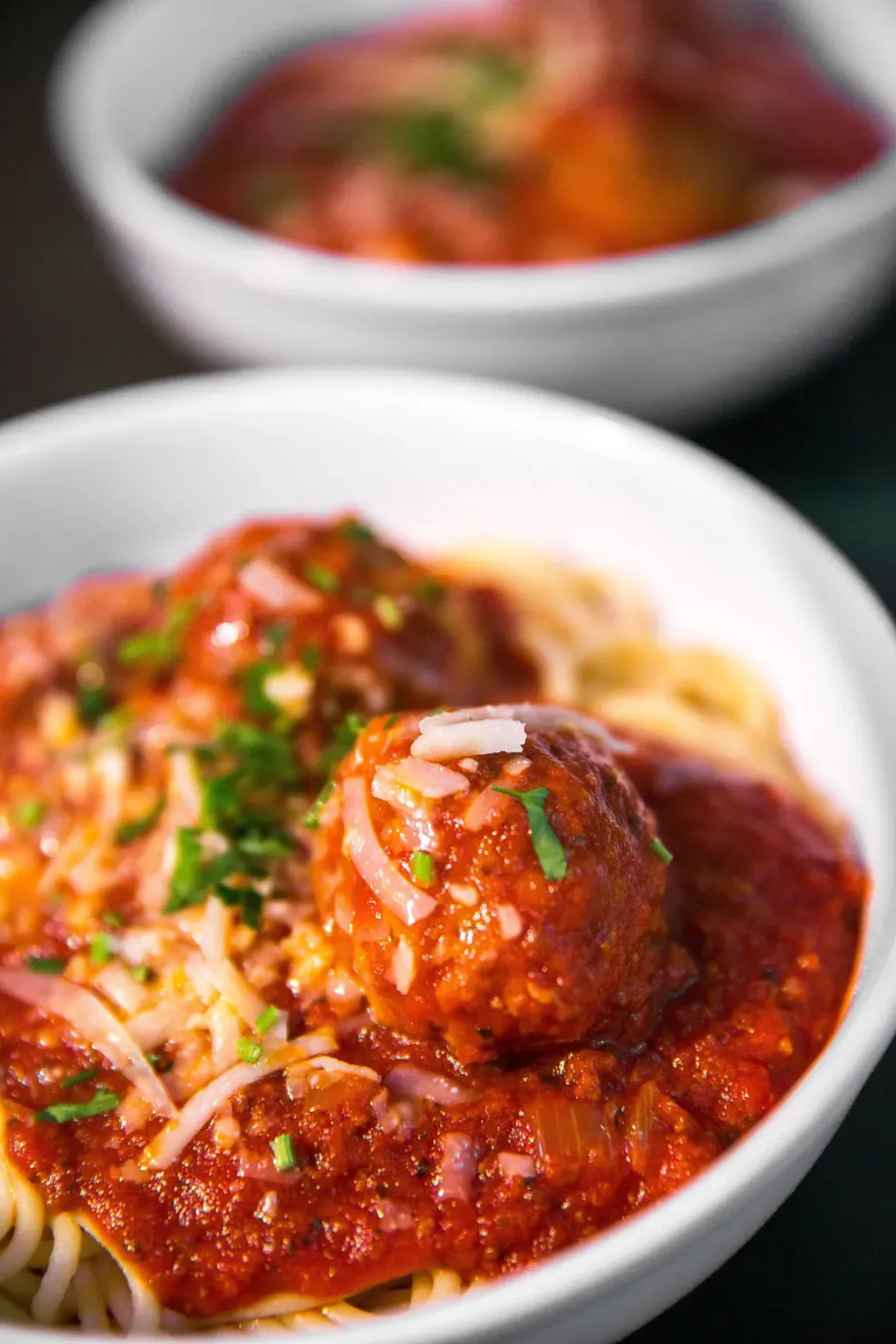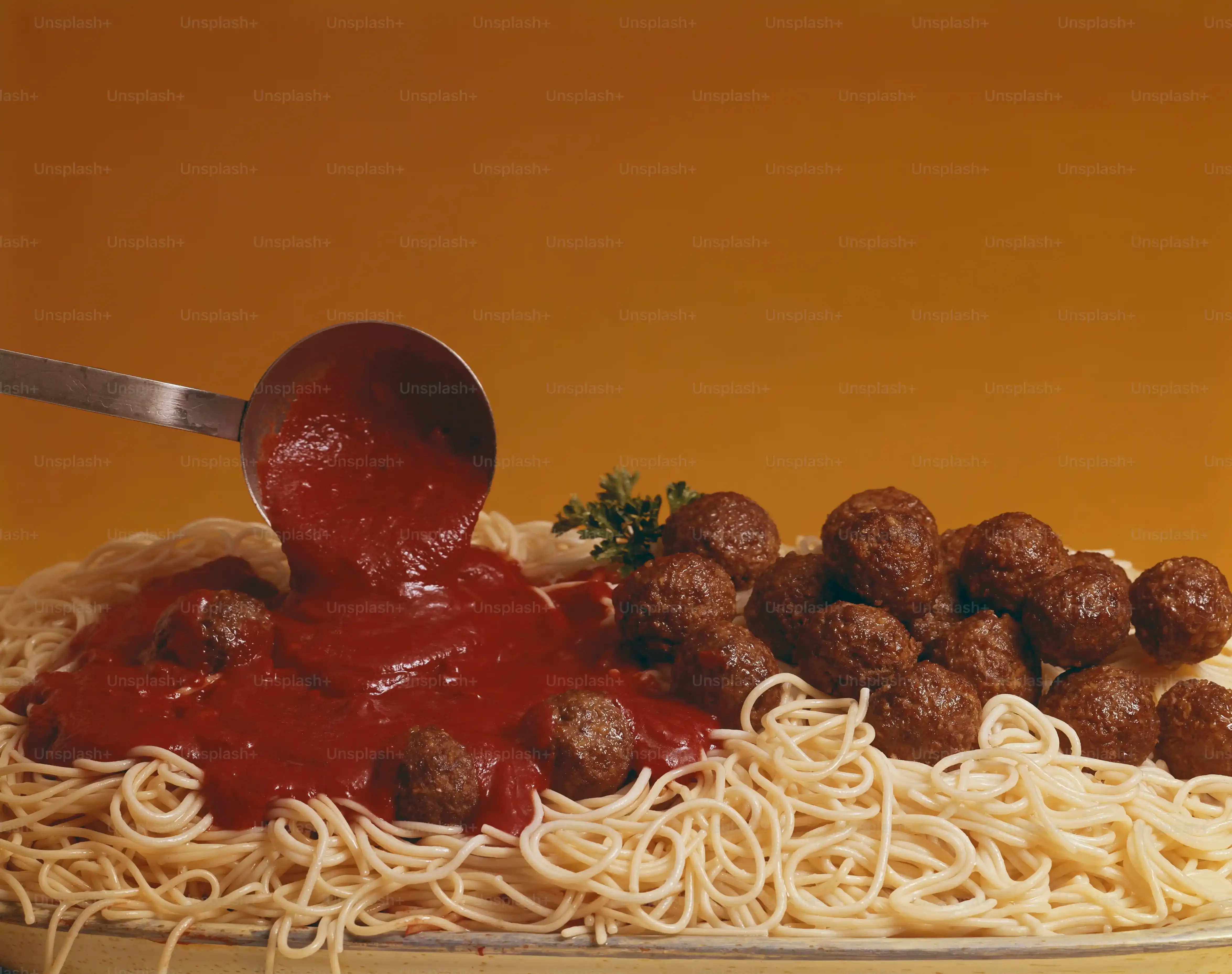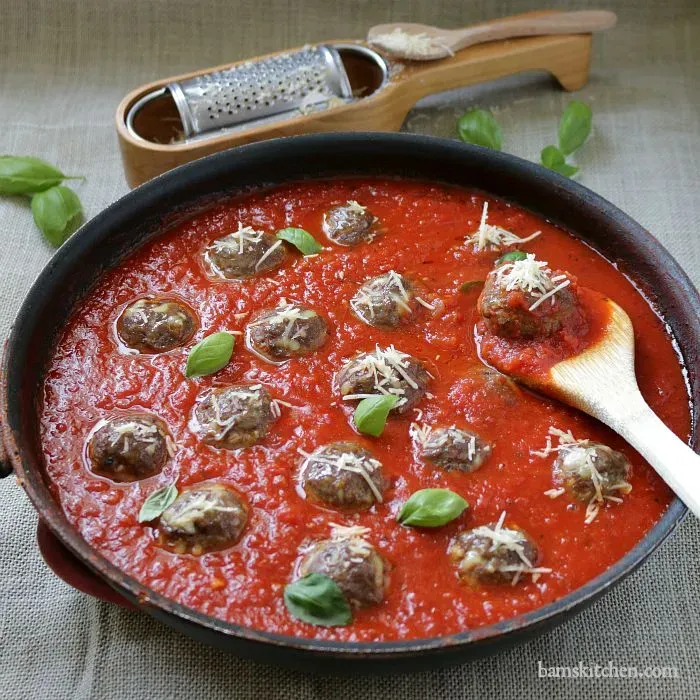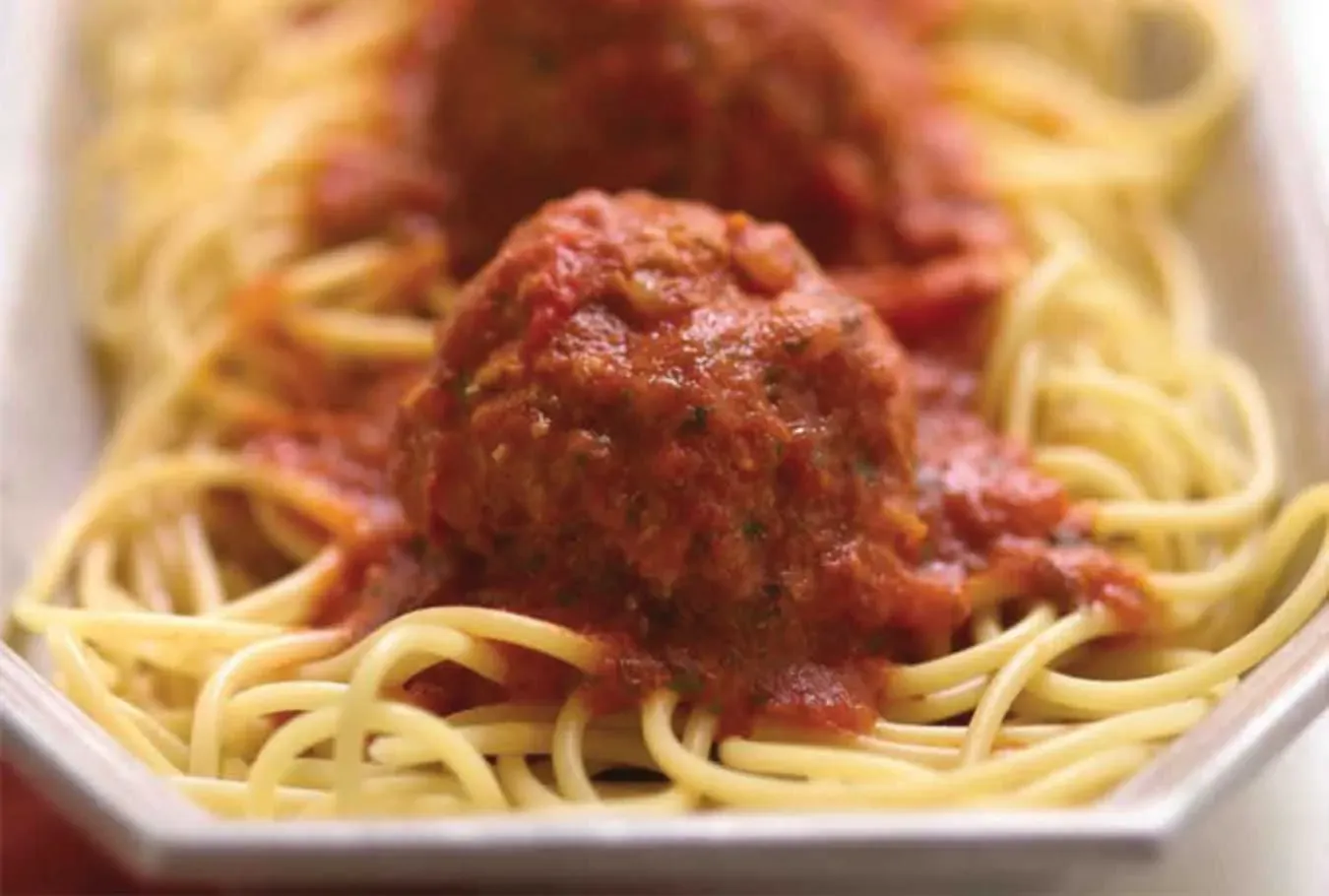Table of Contents
Forget those sad, dry meatballs you've encountered. We're talking about the kind that makes you close your eyes and remember Sunday dinner. That specific taste, that perfect texture – it's the magic of a true grandma's spaghetti and meatballs recipe. It feels like a secret, passed down through generations, but honestly, it's just solid technique and a few key steps done right.
Why Grandma's Spaghetti and Meatballs Recipe is Always Best

Why Grandma's Spaghetti and Meatballs Recipe is Always Best
It Starts with Simplicity and Quality
Look, most restaurant versions try too hard. They add truffle oil, obscure spices, or some kind of foam. A true grandma's spaghetti and meatballs recipe succeeds because it respects the basics. It uses simple, good quality ingredients – decent ground beef, maybe some pork or veal, stale bread, fresh garlic, real Parmesan, and tomatoes that actually taste like tomatoes. There's no need for a dozen obscure items you can only find at a specialty store. It’s about letting those core flavors shine, not burying them under culinary acrobatics.
The 'Secret' Ingredient Isn't Secret, It's Time and Technique
People ask, "What's the secret?" It's rarely a secret ingredient you can buy. It's usually something like soaking the breadcrumbs in milk (a panade, if you want to get technical, but Grandma just called it "making them soft"). It’s about not overworking the meatball mixture. It's about browning them properly before they hit the sauce, developing that crucial flavor crust. And most importantly, it's about the simmer. That sauce doesn't just get warm; it bubbles gently for hours, letting the meatballs tenderize and infuse the tomato with their richness. This commitment to patience is a big part of why Grandma's spaghetti and meatballs recipe is always best.
What makes Grandma's version stand out?
- Simple, quality ingredients.
- Proper technique (like the panade).
- Slow, patient simmering.
- Focus on flavor development, not complexity.
Consistency and Comfort Win Every Time
You know what you're getting with Grandma's recipe. It's reliable. It’s comfort food in its purest form. You don't bite into a meatball and wonder what weird herb is assaulting your taste buds. You get that familiar, satisfying taste and texture. This consistency, this guaranteed deliciousness that transports you back in time, is perhaps the ultimate reason why Grandma's spaghetti and meatballs recipe is always best. It's not just food; it's a feeling, a memory, a reliable anchor in a world that often feels too complicated.
Gathering Your Ingredients for Authentic Grandma's Spaghetti and Meatballs

Gathering Your Ingredients for Authentic Grandma's Spaghetti and Meatballs
Choosing Your Meat: It's Not Just Beef
Alright, let's talk meat. You might think a grandma's spaghetti and meatballs recipe just throws in whatever ground beef is on sale. Not exactly. While ground beef is definitely the base, the best versions often mix it up. A blend of beef, pork, and sometimes veal gives the meatballs more depth of flavor and keeps them incredibly tender. Beef provides that classic richness, pork adds moisture and a touch of sweetness, and veal contributes a delicate texture. Aim for ground meat that isn't super lean; a bit of fat is your friend here for juicy results. Don't overthink the ratio too much, but a 50/50 beef and pork split is a great starting point. This simple mix makes a world of difference.
The Non-Meat Players: Bread, Cheese, and Aromatics
Beyond the meat, the other ingredients are crucial for that authentic grandma's spaghetti and meatballs recipe flavor and texture. Stale bread, not fresh, is key for the breadcrumbs. Why stale? It absorbs liquid better without turning mushy. Soak it in milk – this is your panade – which keeps the meatballs moist from the inside out. Freshly grated Parmesan cheese adds a salty, nutty punch that pre-shredded stuff just can't match. Don't skip the aromatics either: finely minced garlic and onion (or garlic powder and onion powder if Grandma was in a hurry, let's be real) and fresh parsley bring brightness. Good quality canned crushed tomatoes are essential for the sauce; check the ingredients list and avoid cans with added sugar or citric acid if possible. Simple, high-quality components build incredible flavor.
Key Ingredients for Authentic Meatballs:
- Ground beef (80/20 or similar)
- Ground pork (optional, but recommended)
- Stale bread (or good quality breadcrumbs)
- Whole milk
- Freshly grated Parmesan cheese
- Fresh garlic
- Onion (or powder)
- Fresh parsley
- Good quality crushed tomatoes
Crafting the Perfect Meatballs for Your Grandma's Spaghetti and Meatballs Recipe

Crafting the Perfect Meatballs for Your Grandma's Spaghetti and Meatballs Recipe
Mixing and Forming the Meatballs: The Gentle Touch
Alright, you've got your gorgeous mix of meats, your soaked bread, your cheese, and your smelly bits (garlic and onion, obviously). Now comes the crucial part for your grandma's spaghetti and meatballs recipe: mixing. Don't grab a stand mixer or go at it like you're kneading dough for a living. The goal here is to combine everything gently. Overworking the meat develops tough proteins, and nobody wants a rubbery meatball. Use your hands – it's the best tool for feeling when everything is just combined. Add the egg (it's the glue), the panade (that's your soaked bread), cheese, and aromatics to the meat. Mix until it's *just* incorporated. Then, wet your hands slightly and roll the mixture into balls, about the size of a golf ball or slightly larger. Don't pack them super tight. A light hand keeps them tender.
Meatball Mixing Dos and Don'ts:
- DO use your hands for mixing.
- DON'T overwork the mixture.
- DO soak the bread in milk before adding (the panade).
- DON'T pack the meatballs too tightly when rolling.
- DO aim for roughly uniform size for even cooking.
Simmering the Sauce: The Heart of Grandma's Spaghetti and Meatballs

Simmering the Sauce: The Heart of Grandma's Spaghetti and Meatballs
The Magic Happens Low and Slow
You've got your beautifully formed meatballs ready to go. Don't just toss them into cold sauce and hope for the best. The sauce, simmering gently, is where your grandma's spaghetti and meatballs recipe truly comes alive. Start with a base of good quality crushed tomatoes, maybe a little tomato paste for depth, and your sautéed aromatics (garlic and onion again). Bring it to a low simmer, then carefully nestle those meatballs in. They shouldn't be drowning, but mostly submerged. The key here is time and low heat. We're not boiling these; we're letting them bathe in the tomato goodness for at least 1.5 to 2 hours, sometimes longer if you have the patience. This slow simmer tenderizes the meatballs and allows them to release their flavorful juices into the sauce, creating that rich, complex flavor that a quick 30-minute sauce simply cannot replicate.
Why simmer for so long?
- Melds flavors from meatballs and sauce.
- Tenderizes the meat to perfection.
- Develops a deeper, richer tomato flavor.
- Transforms simple ingredients into something extraordinary.
Serving and Enjoying Your Grandma's Spaghetti and Meatballs

Serving and Enjoying Your Grandma's Spaghetti and Meatballs
The Grand Finale: Getting It to the Plate
You've put in the time. The sauce has simmered, the meatballs are tender, and your kitchen smells like pure, unadulterated comfort. Now comes the easy part, right? Mostly. When you're ready to serve your hard-earned grandma's spaghetti and meatballs recipe, cook your pasta according to package directions – please, for the love of all that is holy, salt the pasta water until it tastes like the sea. Drain the pasta, but don't rinse it; that starch helps the sauce cling. You can either toss the pasta directly into the pot with the sauce and meatballs, ensuring every strand gets coated in that luscious goodness, or plate the pasta first and ladle the sauce and meatballs over the top. A generous sprinkle of that good, freshly grated Parmesan cheese is non-negotiable. Maybe some fresh basil if you're feeling fancy. Don't overthink it; the magic is already in the pot. Just get it on a plate and get to eating.
The Taste of Tradition, Made By You
So there you have it. You’ve navigated the meat mixing, the gentle broiling, and the patient simmer. You've taken simple ingredients and, frankly, turned them into something pretty special. That aroma filling your kitchen? That's not just dinner cooking; that's the payoff for following the steps, for understanding that the magic in a grandma's spaghetti and meatballs recipe isn't really magic at all – it's just knowing how to make things taste incredible. Dish it up, watch faces light up, and maybe, just maybe, you'll feel a little bit like a kitchen legend yourself.